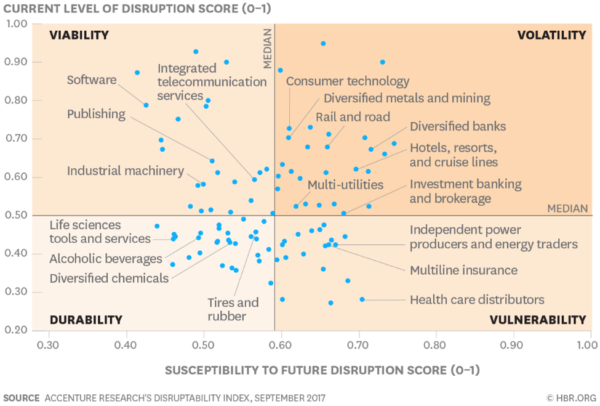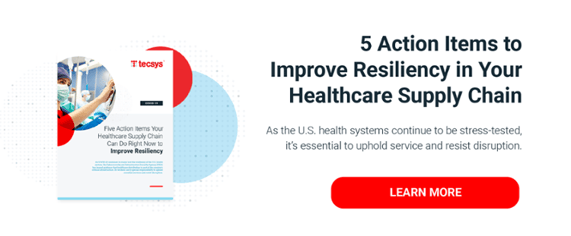Three Post-COVID-19 Outcomes Likely to Impact the Healthcare Industry

Six months ago, news of Trump’s possible impeachment, nestled between Epstein’s death and Weinstein’s conviction, held mindshare. Headlines included WeWork laying off workers and musings on a new IPO called Zoom.
On April 20, oil dropped to less than $0 per barrel and Zoom’s stock more than doubled in value.
A new concept of the “essential economy” has emerged. Healthcare providers, grocery stores, delivery services and postal workers have been anointed as society’s skeleton crew. The people who are holding our world together were nowhere near a headline just six months ago. And tech luddites and corporate laggards are adapting to a digital world.
Who would have thought that a healthcare crisis would turn our $80 trillion economy on its head so quickly?
The pandemic will end; its impact will be permanent.
The Greatest Impact Will Be to Healthcare
While nearly all familiar things will undergo some degree of change in a post-COVID-19 world, it is fairly easy to predict that the most drastic changes will be in healthcare. There will be no return to pre-COVID-19 normal in healthcare.
The society that existed when the healthcare institution was established looked nothing like society today. Today, 20% of the population is over 65, many suffer from complex combined illnesses that last years and lifetimes, and mental health issues are growing at a steady pace.
Efforts have been underway to mend a system that has been failing to adequately meet basic requirements, while running out of funds and struggling to transform. These shortcomings have been underscored in the context of a global shift from treatment to prevention — maybe even from disease care to healthcare. Innovations brought on by this pandemic will not be set aside. COVID-19 has pressed the arc of transformation with the weight of new and different pressures and priorities. The impact is enough to disrupt existing practices permanently.

The pre-COVID-19 healthcare system is a heavily fragmented global institution with a diverse set of stakeholders. Institutions, by design, resist transformation and innovation. For 100 years, we have built upon this single system that has carefully trained professionals to deliver services in a highly regulated fashion, mostly in bricks-and-mortar hospitals, clinics and offices, under the watchful eye of administrators armed with legislation and regulation to preserve and protect profits as well as patients. The system extends to research, testing, manufacturing, distribution, waste disposal and billing. It is a massive institution with deep roots.
There have been attempts to modernize the healthcare system so that it can operate for those who need it, when they need it, where they need it, and at a cost that makes sense. It has been an uphill battle despite the broadening philosophical shift from treatment and disease care to prevention and healthcare. Pockets of transformation have been promising, but progress is slow.
Enter COVID-19, and in just a few months, the rate of change has accelerated and the need to modernize an antiquated institution has never been more apparent. As with any other industry facing a major inflection point, some conventions will collapse while others will emerge as new best practice.
Those ready to spot what technologies have suddenly reached end of life, what trajectories will shift and accelerate, and what new innovations will take hold are best equipped to mount a successful post-COVID-19 healthcare system.
Here are a few examples:
- Pagers will be replaced by devices that can relay more information and allow for two-way communication.
- Fax machines will have no use now that pharmacies have moved into the digital world.
- Patient files will never again be transferred to compact discs.
- Telemedicine, in parallel with employers facilitating better healthcare for employees, two trends that have been inching forward over the last decade, will accelerate with the tailwind of patient rights and responsibilities.
- More robust and complete home healthcare will experience an accelerated transition, leveraging digital equipment.
We have, in just a few weeks, seamlessly blended the digital and physical experience in healthcare in the same way that we have found new ways to replace a physical presence in buying groceries, hosting family dinners and going to school. We are using data to inform policy decisions as well as day-to-day treatment decisions to take a giant step toward intelligence-based health systems.
Outcome 1: The Price of Privacy
September 11, 2001, was a turning point in privacy paradigms. In an instant, the public accepted a new convention of airport restrictions that included random searches and a less-than-desirable time/cost payoff at check-in. The public understood that in the name of safety, a crisis compelled a change to the personal privacy norms to which we had become accustomed. In the years that followed, travelers willingly removed shoes, opened luggage and waited for random, but mandatory secondary checks. Rights to privacy and search and seizure rules were offered up as part of the price for the right to travel. The byproduct: safety.
COVID-19, this time in the name of healthcare, is a crisis that marks another shift in privacy. This pandemic has required healthcare providers to push the limits of Patient Privacy Intelligence (PPI) restrictions in the interest of streamlined access to healthcare. Whereas the old healthcare model is riddled with red tape and inefficiency, citizens seem to be embracing this increase in access in times of need; it is an attractive template for ‘user-friendly’ healthcare delivery moving forward. The catch is that it will be necessary to forgo some PPI protections to preserve those advantages. Will patients be willing to trade off confidentiality for greater healthcare autonomy and convenience? It is a likely concession; and in this case, a lack of privacy will become the byproduct of patient-centric healthcare.
Lifting PPI restrictions and forfeiting some privacy rights might lead to easier access to service, greater flexibility in receiving timely care and a reduction in cost for providers. Enhanced track and trace capabilities will improve readiness for the inevitable next pandemic. New and repurposed vehicles for healthcare information exchange, whether by telephone or digital transmission will allow for faster and more responsive service. As healthcare providers rewrite their playbooks to deliver more patient-focused care, regulators will be pushed to accommodate patient demands before provider dictates, flipping the script on conventional healthcare models.
Outcome 2: A New Supply and Demand Paradigm
With a precedent only seen in wartime conditions, the manner in which we are reallocating resources by repurposing skills to meet demand, almost on the fly, is riveting. We are witnessing resistance evaporate as regulatory bodies park their interests in the wake of essential demand. Products and services that would have taken years to secure approval have been brought to market in days and sometimes hours. Regulatory pathways have been completely redesigned to respond to an event-driven demand cycle.
This trend extends outside of healthcare as well. As pre-COVID-19 business models fail, creativity becomes a necessity and innovation cycles are accelerated. Both inside and outside of healthcare, the choice may be to innovate or perish.
Reinvention will be the mark of players who emerge stronger. We have seen this in grocery, retail, food service, education, legal services and public services such as libraries and art galleries. All of these sectors have figured out how to pivot their business model to respond to appeal to new markets and bend to new constraints. Healthcare will have to follow.
Outcome 3: Service Delivery Transformation
Healthcare infrastructure cannot be fixed. The ones that prevail to fulfill their essential purpose will have to transform. Providers, suppliers and partners will have months, and by some estimates, up to two years to titrate solutions.
Perhaps suppliers will become more regional. Or more diffused. In either case, health systems will adopt a tighter grip on their supply lines. Data and digital enablement will become the nucleus of effective healthcare management. And decentralized care will create new logistical challenges. Supply chain flexibility will be essential to this transformation. Supply chains will have to be able to flex and pivot to innovate, experiment and respond in ways that we have never known before.
While we don’t know how healthcare will look in the future, we do know that it will be different and hospitals who have equipped their supply chains for a tectonic shift and a series of aftershocks will emerge as leaders in the post-COVID-19 world.
The Lushest Forests Come After the Fire
Tata Consultancy Services (TCS) picked up 1 million square feet of office space in Bangalore, marking one of the largest commercial real estate transactions in India just over 2 years ago. Before COVID-19, the TCS policy was 100% of employees worked from offices. Yesterday, Tata announced that they would permanently shift 75% of the office-based work offsite. The company has no plans to reduce headcount and showed no forecasted reduction in revenues in the short or long term.
Old archetypes are being rewritten. And those with a progressive mindset will be ready to forge this next chapter. This crisis is a devastating blow to healthcare, global economies and our social infrastructure. But we will rebuild. It is up to us to navigate the curves in the road ahead to ensure our destination brings us to a better place.



